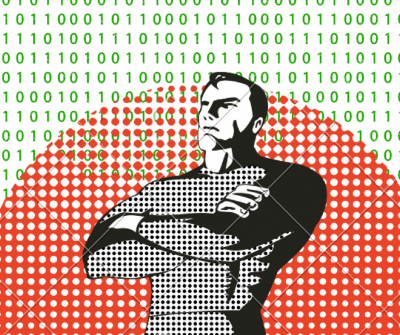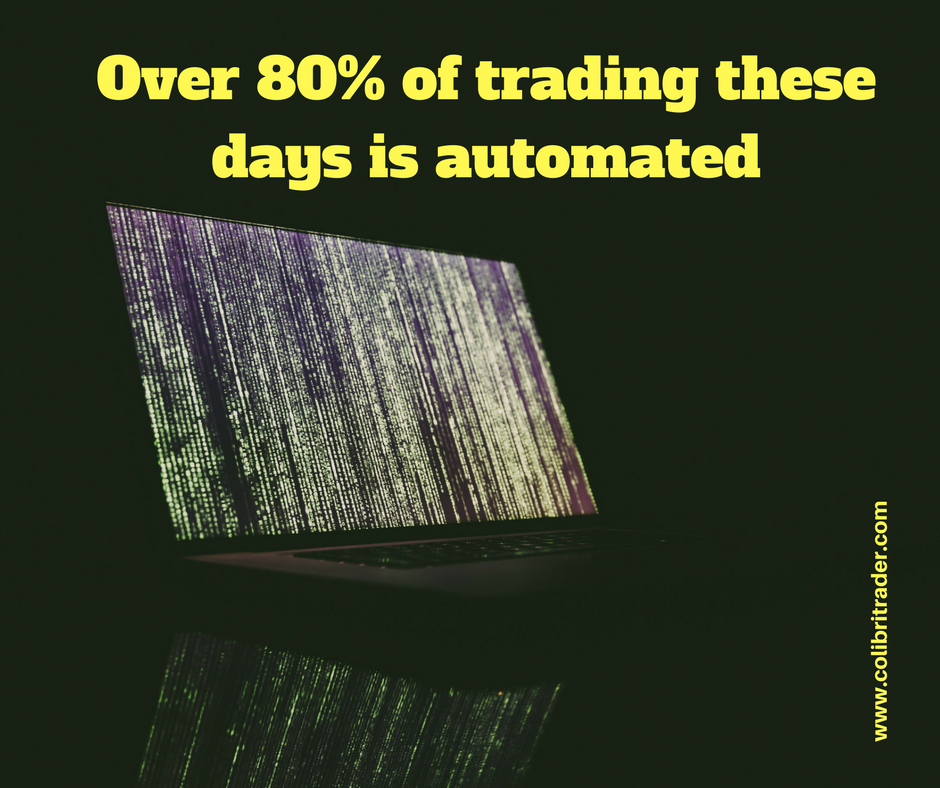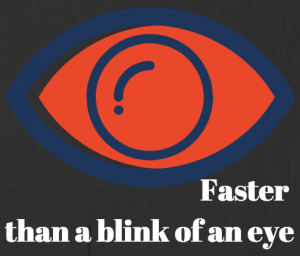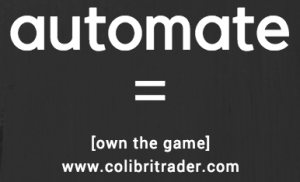High-Frequency Trading Explained
High-Frequency Trading Explained
by: Colibri Trader
In Forex trading, even a price action trader like me can’t ignore the High-Frequency Trading (HFT) industry. And, the way it shaped the Forex market.
To fully understand its impact on the market and prices, imagine that over eighty percent of trading these days is automated. It means, one way or the other, a robot, or computer, deals with the buying and selling of a currency pair.
But this is what is seen from the retail trader’s side. There’s a huge corporate business dealing with HFT.
Quant companies have armies of super computers dealing with processing market orders. They do that at speeds unimaginable a few years back in time.
Even today, if one really goes into details, the findings are amazing. Physical cables were laid down 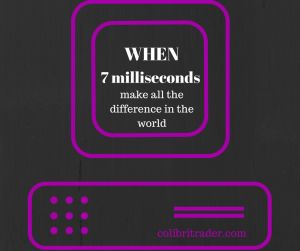
By how much?
By mere 7 milliseconds.
Yes, you’ve heard it right. Seven milliseconds. It was enough to cover the cost of such a vast operation.
High-Frequency Trading in Forex
The Forex industry changed dramatically with the Personal Computer. When online trading became available, retail traders from around the world came to electronic trading.
But it was just the beginning. For computers and computer-generated algorithms changed the way trading is done today.
Look no further than eight years ago. Leading Forex companies were proud to offer “great” spreads to retail clients.
The EURUSD pair used to be quoted at a three-pip spread! Nowadays, zero point something spread on the EURUSD pair is the norm.
Who’s responsible for the fantastic reduction in spreads? You guessed it: the HFT industry. Or at least partially!
Typically, retail traders blame the market when their stop loss gets triggered. How many times you’ve heard/thought that the market is chasing after your stops?
But HFT is not all about triggering stops. I mean, not all the time.
While the HFT trading industry deals with super computers or high-frequency algorithms, they’re still programmed by…
Humans.
As such, the error element still exists. But it has shrunk considerably.
HFT Negatives
The problem with the HFT industry is that it strongly influences the way the market moves. Nowadays, human traders follow robots. Not the other way around.
HFT players (quant firms with more capital and computing power than any retail trader) program the algorithms to buy or sell a currency pair (or other instrument). More exactly, the robots act when economic data comes out.
The Known Input
After all, that’s a known input. We all know when a given set of economic data comes out.
On top of it, there’s an estimated value of it. And, a forecast.
As such, the “algobots” are programmed to buy or sell a given currency/currency pair. They do that instantly.
That’s why prices change “in a blink of an eye”. But you see, even this saying is outdated.
A little more than half a time it takes to blink your eyes is a 250-millisecond interval. These computers make trading decisions much, much faster than that.
Literally, they buy and sell thousands of trades per second. And this automated process changed, of course, the way prices are displayed. Or, it changed the way a chart looks.
Patterns change…
With that, patterns changed too. A head and shoulders or a double top or bottom will appear differently on a chart today than it did two decades or more ago.
Look for this trend to continue. These days, robots identify classic technical analysis patterns themselves. And, they trade them in the opposite way!
…getting even deeper…
Furthermore, there are “algobots” that know how to read. Yes, you’ve read it right!
They’re programmed to spot even the slightest nuances in different texts.
Like, central bank’s statements.
A typical example is the FOMC (Federal Open Market Committee) Statement. The “algobots” are instructed/programmed to buy/sell the dollar based on the text differences in the statement.
Changes in wording is a way to communicate monetary policy. Traders know what to look for in advance. Therefore, the trading process can be automated.
HFT Positives
What’s interesting about the HFT industry is that it is perceived as negative. It has an overall negative aura.
Did your stop got hit?
Damn trading robots!
Is your take profit missed by an inch? It must be the algos.
Sounds familiar???
But not all is bad with the HFT industry. It changed trading conditions for the better.
Remember the three pips spread on the EURUSD mentioned earlier? The reduction in spreads is greatly the result of HFT.
Nowadays, with the ECN (Electronic Communications System), brokers can easily pair buying and selling orders. How is that possible?
HFT is the answer. Pairing client’s orders with liquidity providers’ orders has never been a complicated thing.
But, with computers, when the process is automated, pairing gets better and better.
At first, the spreads shrank. From three pips on the EURUSD to two pips. That’s quite a percentage!
Next, the account types changed. Instead of the four-digit trading account, five-digit ones appeared.
Spreads shrank even more. That’s good for retail trading as costs associated with the process shrank too.
Conclusion
Trading changed and it will continue to change. Technological advances make room for more and more computing power.
A difference between HFT and retail trading will always exist. Even though, retail traders try to close the gap.
How come? Expert Advisors (trading robots) appeared.
In a way, it is still HFT, right? Robots/machines that automatically execute trades.
However, there’s a difference. The real HFT industry trades the 7th or the 8th decimal in a currency pair.
The gap will never close. If anything, trading will change in being more and more sophisticated.
And, computer dependent. Today everything surrounding us depends on computing power and computers.
Why should trading be different? It won’t, as more and more entities will try to get an edge in the HFT industry.
The future will probably belong to AI (Artificial Intelligence). If/when AI’s will be able to replace humans in taking trading decisions, we can say that HFT changed.
Or, that the industry moved to a new era. Until then, long live the HFT!
As a retail trader, one has one choice and one choice only: adapt or stay out of the game.
Happy Trading,
Colibri Trader
p.s.
Check out How to Build a Proper Money Management System
or Learn How I Trade the Market
Let me know of your suggestions/questions on: admin@colibritrader.com





